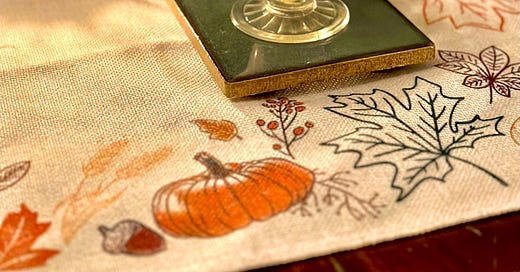For the past couple of years, we’ve made holiday eggnogs.
First there was a Black Walnut Brandy Rum Manhattan eggnog. Then there was a Cynar Boulevardier eggnog.
Both of these were built on the notion that you can take most stirred-and-boozy cocktails, especially those with aged spirits, and convert them into an eggnog.
Both of those cocktail eggnogs had the benefit of being novel and interesting as well as delicious. Indeed, I still have a small bottle of last year’s Cynar Boulevardier eggnog sitting in my refrigerator, and boy-oh-boy has it aged nicely. The flavors have settled and smoothed out. It’s richer, deeper, more approachable. It has the same fundamental character, but it’s more confident, more self-aware. Tasting something like this, you can really understand why booze makers call the aging process “maturation.” This aged version has very much matured.
But it’s still pretty…interesting. Maybe a little too interesting.
With the vegetal, earthy, bittersweet notes of Cynar so prominent in the mix, this sort of thing may not be for everyone. The Manhattan eggnog from the previous year is a little more approachable. But even still, it’s a fairly distinctive flavor, the kind of drink that will appeal to cocktail geeks, but might not work for your normie friends.
So this year, we’re going to make another eggnog, but we’ll leave the cocktail concept behind. This year’s eggnog will just be plain old regular eggnog with a very basic spirit combo.
Actually, we’re going to make two eggnogs, both of which use inexpensive, widely available bottles (higher-proof rum and bourbon on the one hand, low-proof rum and brandy on the other) that you may even have on your bar cart already. And then we are going to take one of those eggnogs and learn how to modify it even further using some basic kitchen spices.
These no-frills eggnogs have much to recommend:
They are incredibly accessible to people with almost any palate — more user-friendly, frankly, than the vast majority of the cocktails I write about in this newsletter, since they play down the heat and intensity of the spirits. This is the thing to serve your friends and relatives when they complain that your drinks are too strong or too boozy or say things like: “I don’t like the taste of alcohol.”
Similarly, these are both excellent drinks for convincing skeptical friends and relatives that there are huge advantages to making stuff at home. Store-bought eggnog is sort of sweet and icky. Homemade boozy eggnog, in contrast, has a kind of dessert-for-breakfast decadent freshness to it, even after it’s been fridge-aged. It’s a good demonstration of the value add you get from making things yourself.
They are fast and easy to make. Once you gather the ingredients — which beyond the liquor are just basic kitchen staples — you can whip up a batch in under 10 minutes with a stand mixer or blender. If you’re using a whisk and bowl, it might take a little longer, but you’re still looking at 15 minutes, tops. After that, you just need to let the mix wait for a day in the fridge.
They are easily scalable. These recipes fill a standard 750ml bottle — so you can use an empty bottle of Rittenhouse Rye, for example. But you can easily make a half-sized batch, or a double batch, or whatever size will fit your needs.
They are relatively inexpensive and easy to source. The most expensive bottle involved in this year’s eggnogs typically costs about $30, and one of the recipes calls for two bottles that cost less than $25.
They’re just absurdly — almost irresponsibly — delicious and easy to drink. I’ve been living with multiple bottles of eggnog in my house for the better part of a month now, and the absolute worst thing, the hardest part of all of this, is that I just. Want. To. Drink. All of them. All the time. It’s tough being me!
Eggs-actly!
At heart, eggnog is just booze mixed with milk and/or cream plus eggs and sugar. You can use whatever type of liquor you want: aged brandy, rum, and whiskey are the norm. Port, madeira, and sherry are reasonably common too. You can add spices and extracts to round out the flavor profile, but you certainly don’t have to.
The best basic eggnogs are creamy, sweet, boozy, and flavorful, decadent and dessert-like. You can almost think of eggnog as a sort of boozy ice cream. And like ice cream, there are varying levels of complexity and weirdness.1 You might, for example, really enjoy a rum-raisin-Cynar-walnut ice cream. But there’s also a real pleasure in an exquisitely made vanilla ice cream, something basic and elemental that’s just made well.
The goal with this year’s eggnog was just to make something elemental, something simple, something inexpensive, something well-made and delicious. Something classic.



